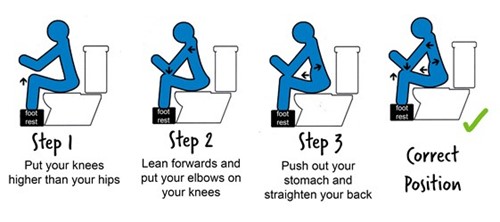For some children the process may be delayed and for others it may not be possible. Most children benefit from a toileting routine which is consistent and allows the child to take small steps towards the aim of being clean and dry.
As with all children, it is important to think about if your child is showing any signs they are ready to be toilet trained.
For some children with additional needs they might not show these signs of being ready but that is not a reason not to put some simple steps in place to start the process.
Steps To Follow
It might be helpful to think about lots of small steps rather than the end goal of being clean and dry. That is quite an achievement for any young child.
If your child is cared for by others - for instance family members, childminders or nursery staff, make sure that you all manage toileting in the same way, so that your child gets the same message.
Talk to professionals who know your child for advice and support to help you and your child. You can call Just One Number for health advice and assessment.
Children may have difficulties with language and / or understanding.
All children need information about all the stages of going to the toilet in a way they can understand.
Use clear and simple language or visuals such as the ‘Toilet Picture Steps’ for boys and girls which are downloadable below. You could make your own using photos of your own toilet.
Fear and Sensory Issues
Your child may have a lot of worries or be really sensitive to things around them. Being sensitive to their worries can help reassure them.
What Can I Do?
If they do not like the flush or other sounds;
The Toilet or Bathroom Environment
Try and make the space as comfortable as possible for your child;
Toileting Challenges
There are many ways that behavioural issues can make toileting a problem for children and young people. They may be less likely to copy others to learn new skills. Some children may resist following instructions.
They may not understand that most people see passing wee or having a poo as a private thing done in the toilet. Your child may not mind feeling wet or dirty, they may like to touch and feel poo.
This is difficult behaviour to manage and it is important to ask for help and support for your child and for you.
My Child Touches or Smears Poo
If your child touches or smears poo there are things you can do to make this behaviour less likely;
If your child does not always find it easy to follow instructions or understand what is ‘private’ you could try using ‘social stories’. A social story breaks down an activity or experience into small, simple steps. It can use cartoons, pictures or photos to make it fun and easier to understand.
Find out more about social stories
Challenging Behaviours
When your child is displaying behaviours that you find a challenge;
Managing toileting problems can be stressful. Small steps taken early can make a big difference, you don’t need to struggle alone - ask for help. There are contact details below of services that can help you.
Practical Support
Help your child to sit correctly when using the toilet - use the image below as a helpful guide;

What Other Support Is Available?
You can apply for;
This online course is for parents with a child with additional needs. It is for parents, relatives and friends of children who may have a physical or learning disability or who may have autistic traits. This short course will help you learn about:
Sign up for FREE with access code: JON70
You can contact the Healthy Child Programme by calling Just One Number on 0300 300 0123 or texting Parentline on 07520 631590. Our opening hours are 8am-6pm Monday-Friday (excluding bank holidays) and 9am-1pm on Saturdays.
If your child attends school or an early years setting, talk to them about any concerns you may have, they can reassure you and / or help you find the right help.
Early Childhood and Family Service supports all Norfolk families with children under 5 years.
To speak to other Norfolk parents and carers, you can join our online community forum below.